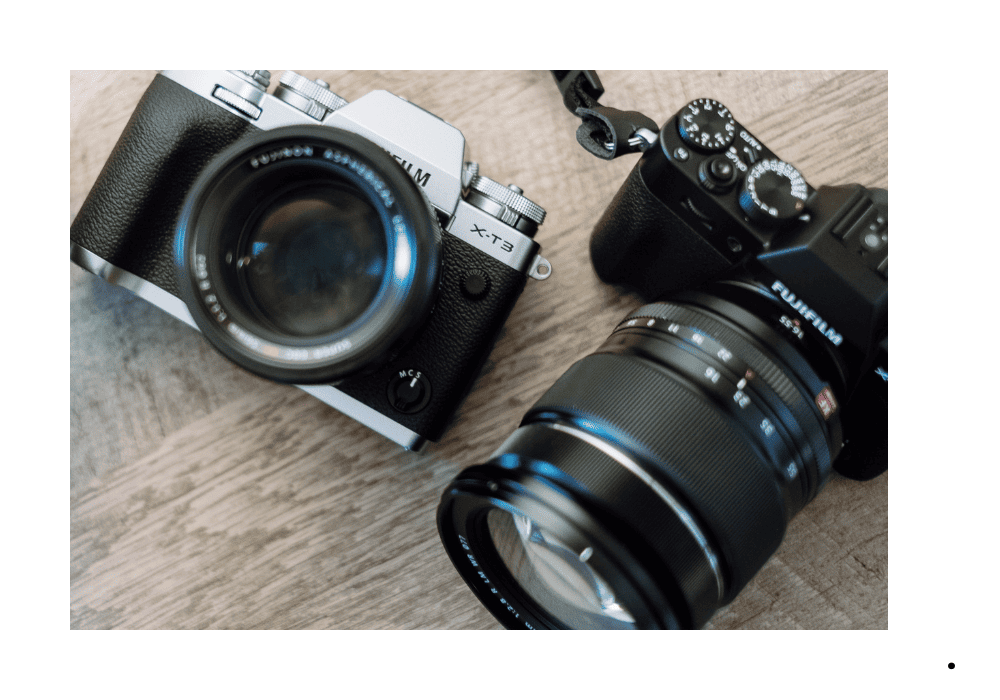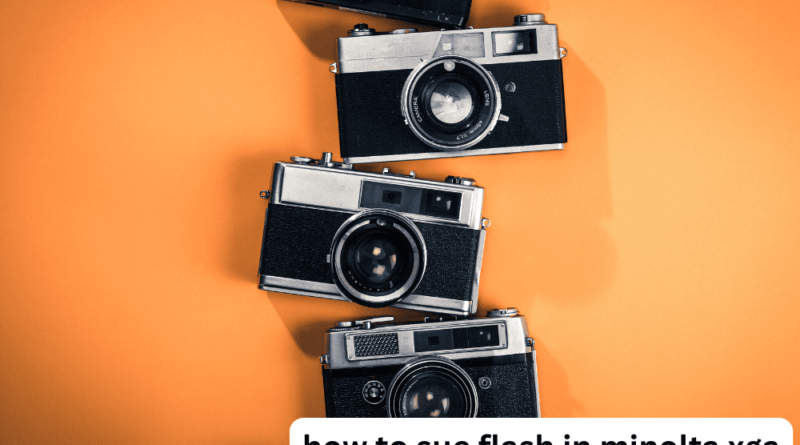How to Use Flash in Minolta XGA: A Comprehensive Guide for Photographers
Table of Contents
The Minolta XGA is a beloved vintage camera known for its manual controls, classic design, and high-quality film photography. One of the most exciting yet tricky aspects of shooting with older cameras like the Minolta XGA is mastering the use of flash. Whether you’re shooting in low-light conditions, trying to capture the perfect portrait, or working on creative lighting setups, understanding how to use flash in Minolta XGA can significantly improve your photography.
This article is a step-by-step guide designed to help you get the most out of your Minolta XGA when using flash. From understanding the camera’s flash system to optimizing your settings and techniques, we’ll cover everything you need to know to elevate your skills. We’ll also address common issues and FAQs to ensure that you have a smooth experience with flash photography on the Minolta XGA.
Introduction to Minolta XGA and Flash Photography
The Minolta XGA is a manual focus, 35mm film SLR camera that offers photographers full creative control over their exposure settings. Like most vintage cameras, it allows for interchangeable lenses, and its mechanical functions make it a favorite for photographers who appreciate the hands-on approach to photography.
Incorporating flash into your photography with the Minolta XGA can be a powerful tool for balancing light, adding fill flash, or even creating dramatic effects. However, using flash on a vintage camera requires an understanding of both the camera’s flash compatibility and the general principles of flash photography.
Why Use Flash with the Minolta XGA?
Flash is used in photography to illuminate subjects in low-light conditions or to control shadows in well-lit environments. When using the Minolta XGA, flash can be especially useful for:
- Portrait Photography: Adding light to faces and reducing harsh shadows.
- Low-Light Situations: Shooting indoors, at night, or in dimly lit environments.
- Fill Flash: Balancing exposure in backlit scenes or on sunny days.
- Creative Lighting: Experimenting with different light sources and angles to create unique effects.
Understanding the Flash System in Minolta XGA
Before diving into how to use flash in Minolta XGA, it’s essential to understand the camera’s flash compatibility and how the flash sync works.
Hot Shoe and Sync Port
The Minolta XGA comes equipped with a standard hot shoe on the top of the camera, which allows you to mount external flashes directly onto the camera. It also features a PC sync port, which is useful if you want to use an off-camera flash or studio lighting equipment. This versatility makes it ideal for both casual and professional flash photography setups.
Flash Sync Speed
When using flash in film photography, the flash sync speed is critical. Flash sync speed is the maximum shutter speed at which your camera can synchronize with the flash. For the Minolta XGA, this is typically 1/60th of a second. If you exceed the sync speed, part of the frame might not be illuminated by the flash because the shutter may not be fully open when the flash fires.
TTL (Through The Lens) Flash Metering
The Minolta XGA does not support modern TTL (Through The Lens) flash metering, meaning that the camera won’t automatically calculate the correct flash exposure based on the scene. Instead, you’ll need to manually adjust the flash power, aperture, and shutter speed to achieve the desired exposure.
Choosing the Right Flash for Minolta XGA

The next step in learning how to use flash in Minolta XGA is selecting a flash that is compatible with the camera. Not all flashes are created equal, and using the wrong flash could result in poor lighting or even damage to the camera.
Dedicated Flash Units
One option is to use a dedicated Minolta flash unit, such as the Minolta Auto 320X or the Minolta Auto 200X. These flashes were specifically designed to work with Minolta’s older SLR cameras and offer features such as automatic exposure settings that are compatible with the Minolta XGA.
Third-Party Flash Units
If you don’t have access to a dedicated Minolta flash, many third-party flash units are compatible with the Minolta XGA. When choosing a third-party flash, ensure that it has:
- Manual controls: Since the Minolta XGA lacks TTL metering, you’ll need to adjust the flash manually.
- Safe voltage: Vintage cameras like the Minolta XGA can be damaged by flashes with high trigger voltages. Ensure the flash you choose is compatible with the camera’s hot shoe voltage.
Using Off-Camera Flash
Using an off-camera flash can provide more creative control over your lighting. You can connect the flash to your Minolta XGA using a PC sync cable or a radio trigger, allowing you to position the light source away from the camera.
Step-by-Step Guide: How to Use Flash in Minolta XGA
Now that you have a better understanding of the equipment, let’s walk through the steps of how to use flash in Minolta XGA effectively.
Step 1: Mounting the Flash
- Attach the flash to the hot shoe on top of the camera or connect it via the sync port if using an off-camera flash.
- Ensure the flash is securely in place, and turn it on. Some older flashes require a few seconds to charge before firing.
Step 2: Set the Camera to Manual Mode
The Minolta XGA works best with flash in manual mode. Set your shutter speed to 1/60th of a second to ensure proper synchronization with the flash.
Step 3: Adjust Aperture for Flash Exposure
The aperture controls how much light from the flash reaches the film. A wider aperture (e.g., f/2.8 or f/4) will allow more light in, which is useful for darker environments. A smaller aperture (e.g., f/8 or f/11) reduces the amount of light and is ideal for situations where the flash is very close to the subject or when shooting in bright environments.
- Tip: Flash exposure is primarily controlled by aperture, while ambient light exposure is controlled by the shutter speed.
Step 4: Test the Flash Output
After setting your shutter speed and aperture, take a test shot. Look at the result, and evaluate whether the flash provides enough light. If the image is too dark or too bright, adjust the flash power (if your flash has manual power settings) or change the aperture to let in more or less light.
Step 5: Use Flash for Fill Light
In bright conditions, you might want to use the flash as a fill light to soften harsh shadows on your subject. To do this:
- Keep the shutter speed at 1/60th and adjust the aperture to balance the natural and artificial light.
Creative Flash Techniques with the Minolta XGA

Once you’ve mastered the basics, you can experiment with advanced techniques to further enhance your flash photography with the Minolta XGA.
Bounce Flash
Using bounce flash can create a softer, more natural light. Instead of pointing the flash directly at your subject, angle it toward a reflective surface like a ceiling or wall. This diffuses the light, reducing harsh shadows and making the light appear more even.
Rear Curtain Sync
Rear curtain sync, or second curtain sync, means the flash fires just before the shutter closes, rather than at the beginning of the exposure. This technique is particularly useful for capturing motion and creating dynamic light trails while keeping the subject well-exposed.
Flash with Long Exposures
Another creative technique is combining flash with long exposures. Set the camera to a slow shutter speed (e.g., 1/15th or slower), and use the flash to freeze your subject while allowing ambient light to blur or streak in the background. This technique is excellent for nighttime photography or capturing motion in a still image.
Common Flash Photography Issues and How to Fix Them
While using flash with the Minolta XGA, you might encounter some common challenges. Let’s look at how to troubleshoot them.
Overexposed Images
If your images are overexposed, the flash may be too powerful for your settings. Try the following:
- Close the aperture to a smaller setting (e.g., from f/4 to f/8).
- Reduce the flash power if possible.
- Move the flash farther from the subject.
Underexposed Images
Underexposed images can occur when the flash isn’t providing enough light. To fix this:
- Open the aperture to a wider setting (e.g., f/2.8 or f/4).
- Increase the flash power.
- Move the flash closer to the subject or use a reflector to bounce more light toward your subject.
Harsh Shadows
Direct flash can sometimes create harsh shadows, especially in portrait photography. To reduce this effect:
- Use bounce flash by angling the flash at a ceiling or wall.
- Add a diffuser to soften the light.
- Use off-camera flash to create more natural shadows.
Mastering Flash Photography in Various Scenarios
Indoor Portrait Photography
When shooting indoor portraits, flash can be used to illuminate the subject and reduce shadows. Set the flash power to a moderate level and consider using bounce flash to create soft, flattering light on the subject’s face.
Outdoor Daylight Photography
In bright daylight, the flash is often used for fill light, helping to balance shadows on the subject’s face caused by the harsh sun. Keep the flash at a low power setting and use a narrow aperture for a balanced exposure.
Low-Light or Nighttime Photography
For nighttime photography, the flash becomes your primary light source. Open the aperture wider to allow more light, and use the flash to highlight your subject against the dark background.
FAQs about How to Use Flash in Minolta XGA
1. Can I use any flash with the Minolta XGA?
Not all flashes are compatible with the Minolta XGA. It’s essential to choose a flash that has manual controls and a safe trigger voltage to avoid damaging the camera.
2. What is the flash sync speed on the Minolta XGA?
The flash sync speed on the Minolta XGA is 1/60th of a second. Ensure you do not exceed this shutter speed when using flash to avoid partial exposure.
3. How can I avoid overexposed images when using flash?
To prevent overexposure, reduce the flash power, close the aperture to a smaller setting, or move the flash farther from the subject.
4. Can I use off-camera flash with the Minolta XGA?
Yes, you can use off-camera flash with the Minolta XGA by connecting the flash to the camera via the PC sync port or using a radio trigger.
5. Do I need a diffuser for my flash with the Minolta XGA?
A diffuser is recommended if you want to soften the light from your flash and reduce harsh shadows
Conclusion: Mastering Flash with the Minolta XGA
Learning how to use flash in Minolta XGA is a rewarding experience that can enhance your photography by providing better control over lighting, exposure, and creative effects. Whether you’re using a dedicated Minolta flash or experimenting with third-party options, mastering flash photography on this vintage camera opens up a world of possibilities.
Remember to practice adjusting your settings, experiment with different lighting techniques, and troubleshoot common issues as they arise. With time, you’ll gain the confidence and skills needed to produce stunning flash photographs with your Minolta XGA.

